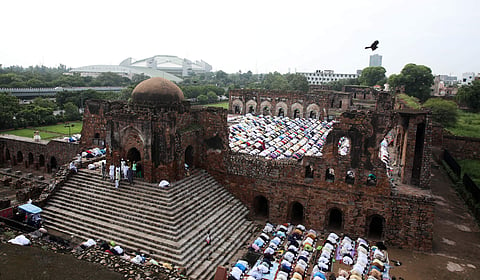

NEW DELHI: A unique three-storey pyramidal edifice on which ancient Ashokan column stands inside the Feroz Shah Kotla has been successfully restored.
The structure is about 660-year-old. Weathering and rats burrowing underground had eroded the structural integrity of the building made of Delhi quartzite on the campus of the 13th-century citadel built by Sultan Feroz Shah Tughlaq.
The two-bay deep arched cells on the ground floor were worst affected with cracks and stones loosening due to rainwater seepage.
The Archaeological Survey of India (ASI) started repair of the structure and conservation of other ruins in the fortress campus, originally called Kushk-e-Feroz (palace of Feroz), in 2019. The project had to be paused in March due to the pandemic. The work resumed in July after restrictions were relaxed.
“Gaps between the stones have effectively been filled with traditional Surkhi mortar containing brick crush, sand and lime. Besides, fixing loose wall stones and roof, flooring has also been re-laid. The rats had dug up the area around the foundation of the structure where the Ashokan pillar is installed which has been causing damage to the building,” said an ASI official associated with the project.
Feroz Shah, the founder of the fifth city of Delhi, brought the pillar with Ashokan edicts from Topra in Ambala.
Hence, it is also called the Delhi-Topra pillar.
“The surface of the top floor has developed cracks and was in bad condition, which has also been plastered and appropriate slopes have been made to prevent the accumulation of rainwater on the terrace. After conservation, the structure is out of bounds to general visitors. Devout would throng the structure, especially on Thursdays, to pray to jinns here. They would light earthen lamps, candles and incense sticks inside the cells which have caused significant damage to the interior surface,” said the official.
The official added that the decision to lock a couple of structures, including baoli (stepwell) and a series of cells on which Jami Masjid is built, was taken for the safety of the visitors and better upkeep of the site.
The ASI will soon start improving the landscape and restoration of ‘old ruined palace’, located in the south-eastern part of the citadel.